Loading
Archives of Nephrology and Renal Studies
ISSN: 2771-1889
All Articles
A Quality Improvement Initiative to Reduce Catheter-Associated Urinary Tract Infections by Decreasing Unnecessary Foley Catheter Use in Hospitalized Patients
Vuha Reddi, Oleg Sostin, Georgina Carlson, Polina Pinkhasova, Gustavo Alday
Catheter-associated urinary tract infections (CAUTIs) represent 80% of urinary infections in a hospital setting [1]. CAUTIs are not only the most common hospital associated infections, but also are the most avoidable, with up to 69% of the cases being preventable [2]. Approximately nine thousands of deaths each year may be attributable to CAUTIs [2].
Arch Nephrol Ren Stud, 2023, Volume Volume 3, Issue Issue 1, p1-2 | DOI: 10.33696/nephrology.2.009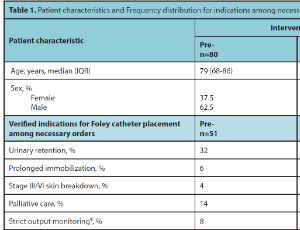
The RiVUR Study Outcomes and Implications on the Management of Vesicoureteral Reflux
Tiffany Damm, Ranjiv Mathews
The Randomized intervention for Vesicoureteral Reflux (RiVUR) study was an effort by the National Institute of Health to identify the most significant question on the management of vesicoureteral reflux (VUR), i.e. Did antibiotic prophylaxis reduce the incidence of recurrent urinary tract infections (UTI) in children with VUR? During the initial phases of the RiVUR study, several similar studies were performed that seemed to indicate lack of benefit of antibiotic prophylaxis in VUR.
Arch Nephrol Ren Stud, 2022, Volume Volume 2, Issue Issue 1, p1-5 | DOI: 10.33696/nephrology.2.006
NSAID-associated Renal Injury: Mechanisms, Risks, and Safer Strategies
Muhammad Umar Ahsan, Umme Ambreen, Hassan Javed, Nirmal Noor, Mahnoor Jan, Muhammad Naeem Khan
Non-steroidal anti-inflammatory drugs (NSAIDs) are commonly used analgesics that have a high risk of renal injury, especially in susceptible populations such as the elderly, patients with chronic kidney disease (CKD), heart failure, or those on poly pharmacy. This commentary emphasizes the pathophysiological mechanisms of NSAID-induced kidney damage, including prostaglandin inhibition, renal vasoconstriction, and interstitial nephritis—and highlights recent evidence linking NSAIDs to acute kidney injury (AKI) and CKD progression.
Arch Nephrol Ren Stud, 2025, Volume Volume 5, Issue Issue 1, p1-5 | DOI: 10.33696/nephrology.5.013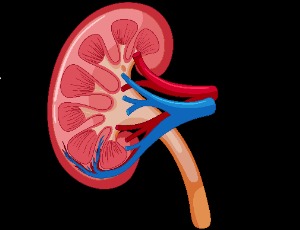
A Case Report and Literature Review on Complications of Pediatric Maintenance Intravenous Fluids
Jaicy Pottokaran, Larry T Patterson, Mark S Segal
After establishing the new standard of care of isotonic fluids for maintenance therapy, there has not been a systematic follow-up to determine whether the goal of the switch has been achieved or whether there have been any unexpected complications with the change. This is a brief review of the history of maintenance intravenous fluids and potential complications of isotonic fluid therapy spurred by a case.
Arch Nephrol Ren Stud, 2024, Volume Volume 4, Issue Issue 1, p1-7 | DOI: 10.33696/nephrology.4.010
Percutaneous Ablation of Localized Renal Masses: An Updated Review
Kimberly A. Maciolek, Noah S. Schenkman
Thermal ablation (TA) is increasingly used as a treatment for localized renal masses (LRMs, <4 cm) especially in older or comorbid patients. Our previous article by Mershon et al., highlighted the safety and efficacy of TA for treatment of LRMs in select patients. In this presentation, we update that work and discuss new frontiers for TA including patient selection, procedural improvements, and outcomes.
Arch Nephrol Ren Stud, 2021, Volume Volume 1, Issue Issue 1, p1-9 | DOI: 10.33696/nephrology.1.001
Peritoneal Imaging may be the Last Piece of the Puzzle for Precision Evaluation of Peritoneal Function
Xiangwen Diao, Xiao Yang
Due to changes in end-stage renal disease (ESRD) policies in many countries and the impact of COVID-19, the importance and demand for peritoneal dialysis (PD) as a home dialysis treatment modality is growing prominently [1]. However, peritoneal membrane dysfunction remains a bottleneck restricting the application of PD. Therefore, there is an urgent need to develop new methods to accurately assess peritoneal function.
Arch Nephrol Ren Stud, 2022, Volume Volume 2, Issue Issue 1, p6-8 | DOI: 10.33696/nephrology.2.007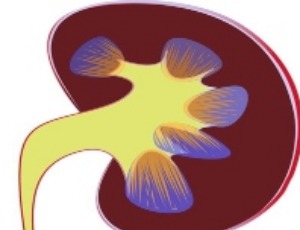
Factors Associated with Psychiatric Vulnerability in Patients with End-Stage Renal Disease at the Zou/Collines Departmental Hospital, Benin
Séraphin Ahoui, Joseph Godonou, Aimé Vinassé, Aubin Melikan, Jaurel Godjo, Elfreed Alavo, Jacques Akobi, Eric Lossou, Sécondine Gnitoungbe, Sylvain Glitho, Francis Tognon Tchegnonsi
Introduction: End-stage chronic kidney disease (CKD) poses a significant challenge to patients' mental health, frequently leading to anxiety, depression, and sleep disturbances. This study aimed to identify factors associated with psychiatric vulnerability among patients with end-stage renal disease at the Zou/Collines Departmental Hospital in Benin. Methods: We conducted a cross-sectional study from January to June 2024, including patients with end-stage renal disease managed in the internal medicine department.
Arch Nephrol Ren Stud, 2025, Volume Volume 5, Issue Issue 1, p6-13 | DOI: 10.33696/nephrology.5.014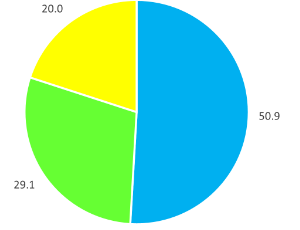
Protective and Therapeutic Efficacy of Palmitoylethanolamide in Diabetes Induced Renal Damage: A Narrative Review of Scientific Evidences
Vishal Dubey, Jignesh Kansagra, Bhargav Kamani, Varun Sureja
Diabetes is one of the most common metabolic conditions that can significantly impair the overall quality of life. Diabetic nephropathy is a diabetes-associated renal damage condition and one of the most common diabetes-induced renal complications. The hyperglycaemia associated with diabetes is considered one of the key factors associated with the renal damage. The endocannabinoid system is a complex biological process involved in various physiological activities, while its impairment is directly associated with numerous pathological conditions as well.
Arch Nephrol Ren Stud, 2024, Volume Volume 4, Issue Issue 1, p8-13 | DOI: 10.33696/nephrology.4.011
Review of Renal Transplantation of Hepatitis C Viremic Donor Organs into Aviremic Recipients
Jiawei Cui, Roman Perri
The development of direct-acting antiviral agents for the treatment of Hepatitis C (HCV) has changed the practice of treating patients with HCV. In particular, organ transplant recipients who have not previously been exposed to HCV are now able to consider receiving an organ from a donor who is infected with HCV, and anticipate effective antiviral therapy after transplantation.
Arch Nephrol Ren Stud, 2022, Volume Volume 2, Issue Issue 1, p9-16 | DOI: 10.33696/nephrology.2.008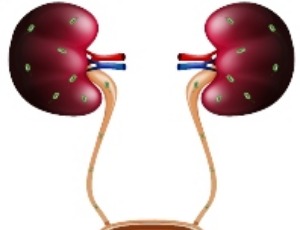
Safety of Using Rituximab Therapy During COVID-19 Pandemic
Hatem Ali, Mohammed Elshafey, Mahmoud M Mohamed
Our modern world is facing extraordinary circumstances while passing through a serious pandemic caused by the novel coronavirus (COVID-19) which may lead to multi-organ system failure & death. Bcell depletion could compromise antiviral immunity, which makes the safety of rituximab use in the COVID19 era unclear.
Arch Nephrol Ren Stud, 2021, Volume Volume 1, Issue Issue 1, p10-15 | DOI: 10.33696/nephrology.1.002
Variant (rs2576178) of Renalase Gene and Its Association with End Stage Renal Disease Patients in Hilla Province
Zahraa Isam Jameel, Rabab Omran, Ammad Hassan Mahmood
Renalase, a newly discovered flavin-adenine dinucleotide-dependent amine oxidase released by the kidney, circulates in the blood and has an impact on heart function and systemic blood pressure. We conducted the research in Babylon from February to July of 2016. We collected 50 blood samples from patients with end stage renal disease admitted to Merjan Teaching Hospital in Babylon Province, Iraq. In addition to the control group (50 samples) of healthy people aged 11 to 80, all patients and control groups were from the same ethnic group (Arab).
Arch Nephrol Ren Stud, 2024, Volume Volume 4, Issue Issue 1, p14-19 | DOI: 10.33696/nephrology.4.012
Factors Associated with High Blood Pressure in Patients with Chronic Kidney Disease at the Borgou and Alibori Departmental Teaching Hospital
Séraphin Ahoui, Aimé Vinassé, Joseph Godonou, Aubin Melikan, Paterne Agbété, Jaurel Godjo, Elfreed Alavo
Introduction: Hypertension (HTN) is a major public health issue and is both a cause and a common complication of chronic kidney disease (CKD). This study aimed to determine the prevalence of HTN and identify its associated factors in patients with advanced CKD in Parakou, Benin. Patients and Methods: A cross-sectional study was conducted in the Nephrology Department of the CHUD-B/A hospital from April 01, 2023, to August 31, 2023. We included all consenting patients aged 15 and over with stage 3 to 5 CKD.
Arch Nephrol Ren Stud, Volume 5, Issue 1, p14-21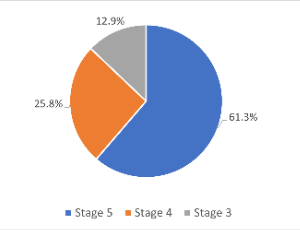
The Role of Direct Oral Anticoagulants in Advanced Chronic Kidney Disease – Questions and Future directions
Filip Ionescu, Saima Mansuri
With the advent of the direct oral anticoagulants (DOACs), patients requiring anticoagulation for common conditions such as atrial fibrillation and venous thromboembolism no longer need to worry about dietary restrictions or regular monitoring of the international normalized ratio which complicated warfarin treatment.
Arch Nephrol Ren Stud, 2021, Volume Volume 1, Issue Issue 1, p16-20 | DOI: 10.33696/nephrology.1.003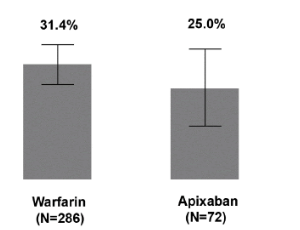
How Well Do Hemodialysis Patients Respond to the BNT162b2 mRNA COVID-19 Vaccine?
Fernando Carrera, Joana Costa, Luciano Pereira, Marco Marques, Belarmino Spencer, Francisco Ferrer
In January 2020, the World Health Organization (WHO) classified COVID-19 to be a Public Health Emergency of International Concern and declared it a pandemic on March 11, 2020 [1]. Over one hundred and eighty-five million people have been infected by SARS-CoV-2 and roughly four million have died worldwide so far
Arch Nephrol Ren Stud, 2021, Volume Volume 1, Issue Issue 1, p21-27 | DOI: 10.33696/nephrology.1.004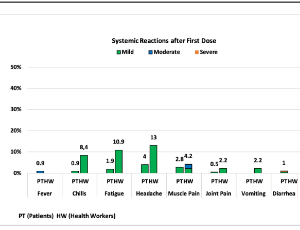
Commentary on: “Multiple Single Cannulation Technique of Arteriovenous Fistula: A Randomised Controlled Trial”
Ricardo Peralta, Rui Sousa, Bruno Pinto, Pedro Gonçalves, Carla Felix, João Fazendeiro Matos
One of the most important renal nursing procedures is the cannulation of a vascular access (VA), a procedure that is carried out on every single dialysis treatment. VA cannulation method is still a procedure that reflects local unit practices and the skill of the individual nurse. Despite the impact needling has on VA survival and patient outcome, no universal or standardized method has been proposed for cannulation.
Arch Nephrol Ren Stud, 2021, Volume Volume 1, Issue Issue 1, p28-33 | DOI: 10.33696/nephrology.1.005
About Scientific Archives
Scientific Archives is a global publisher initiated with the mission of ensuring equal opportunity for accessing science to research community all over the world. Spreading research findings with great relevance to all channels without any barrier is our goal. We want to overcome the challenges of Open Access with ensured quality and transparency.
